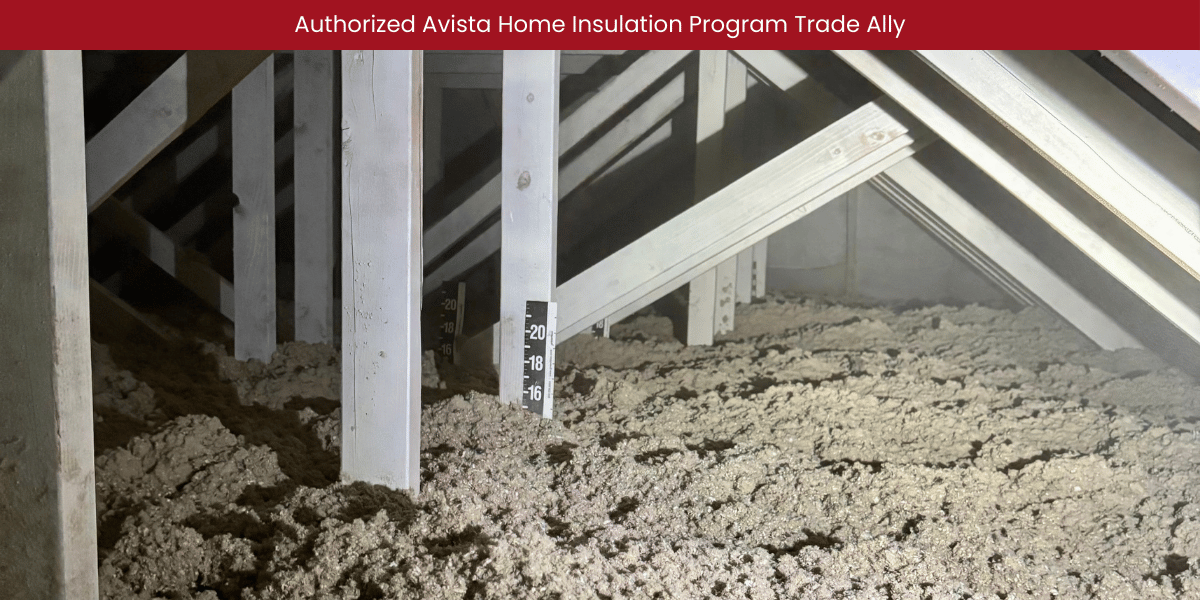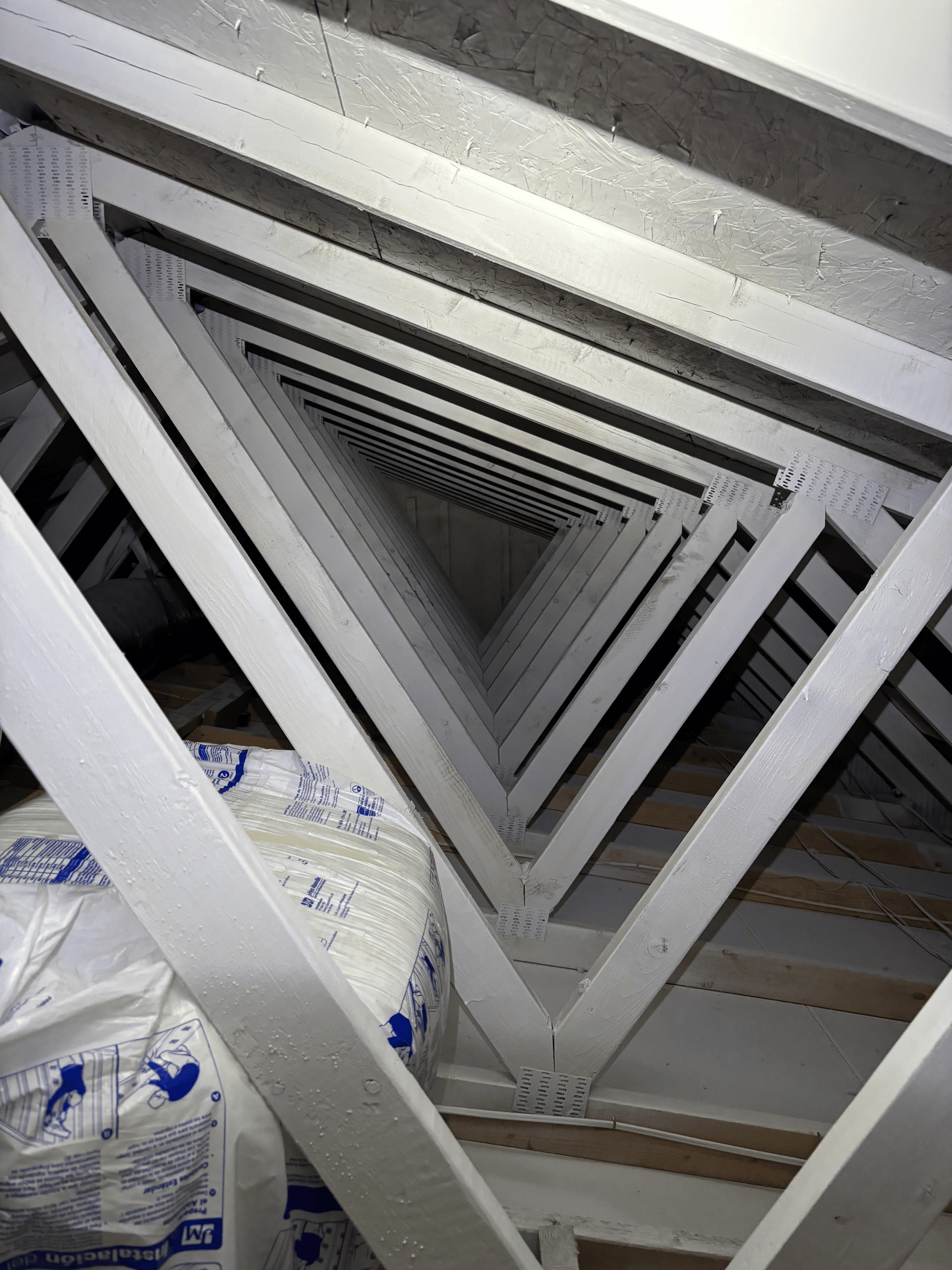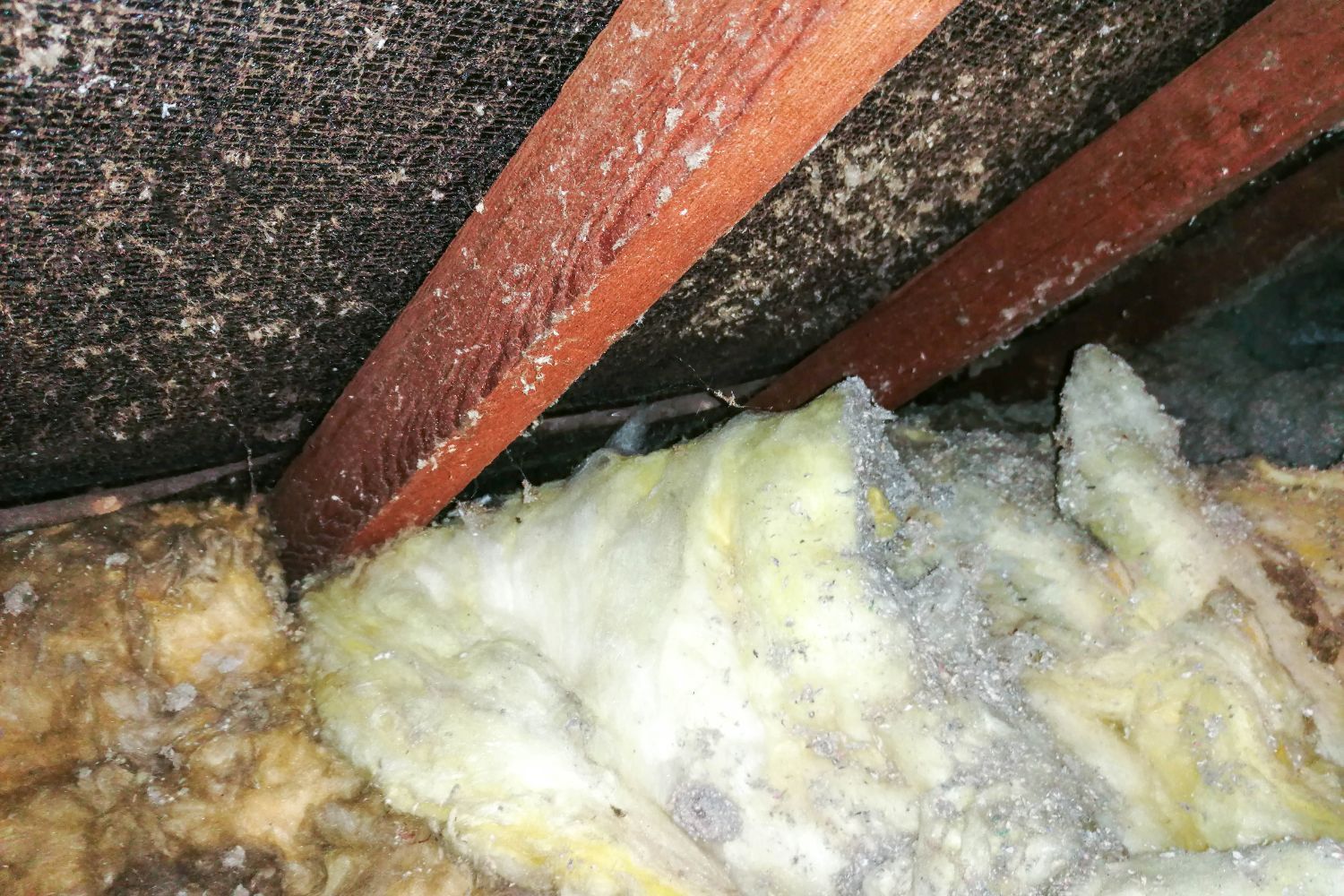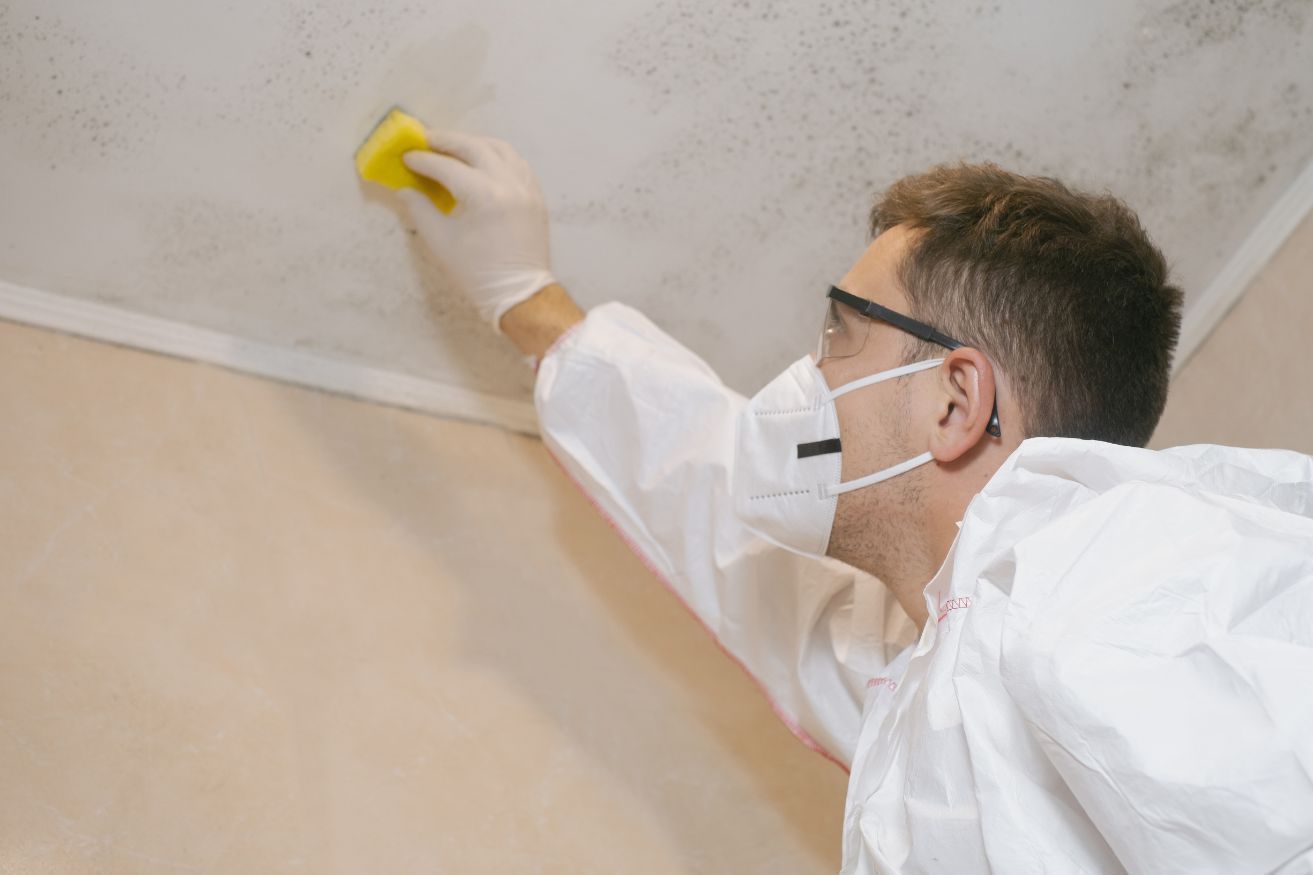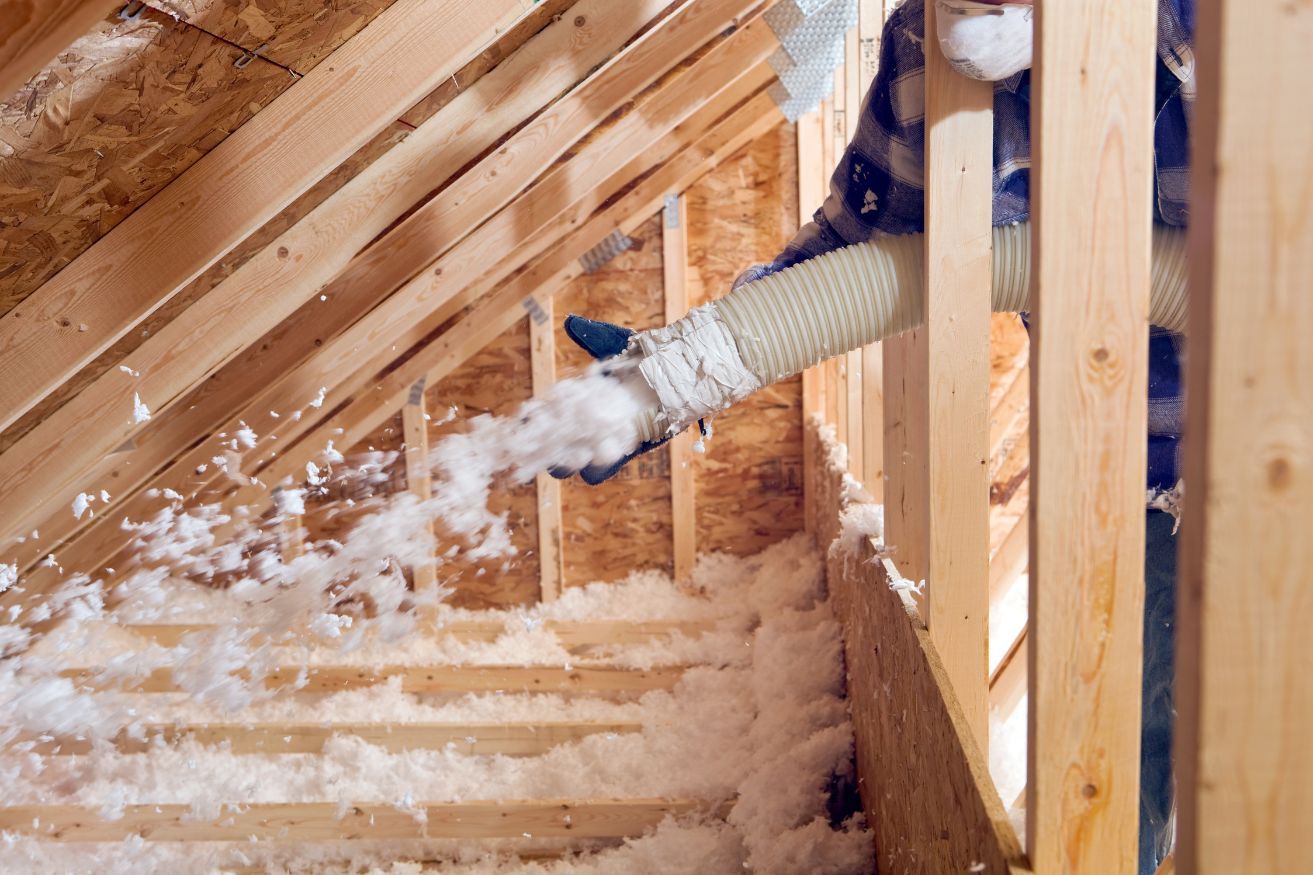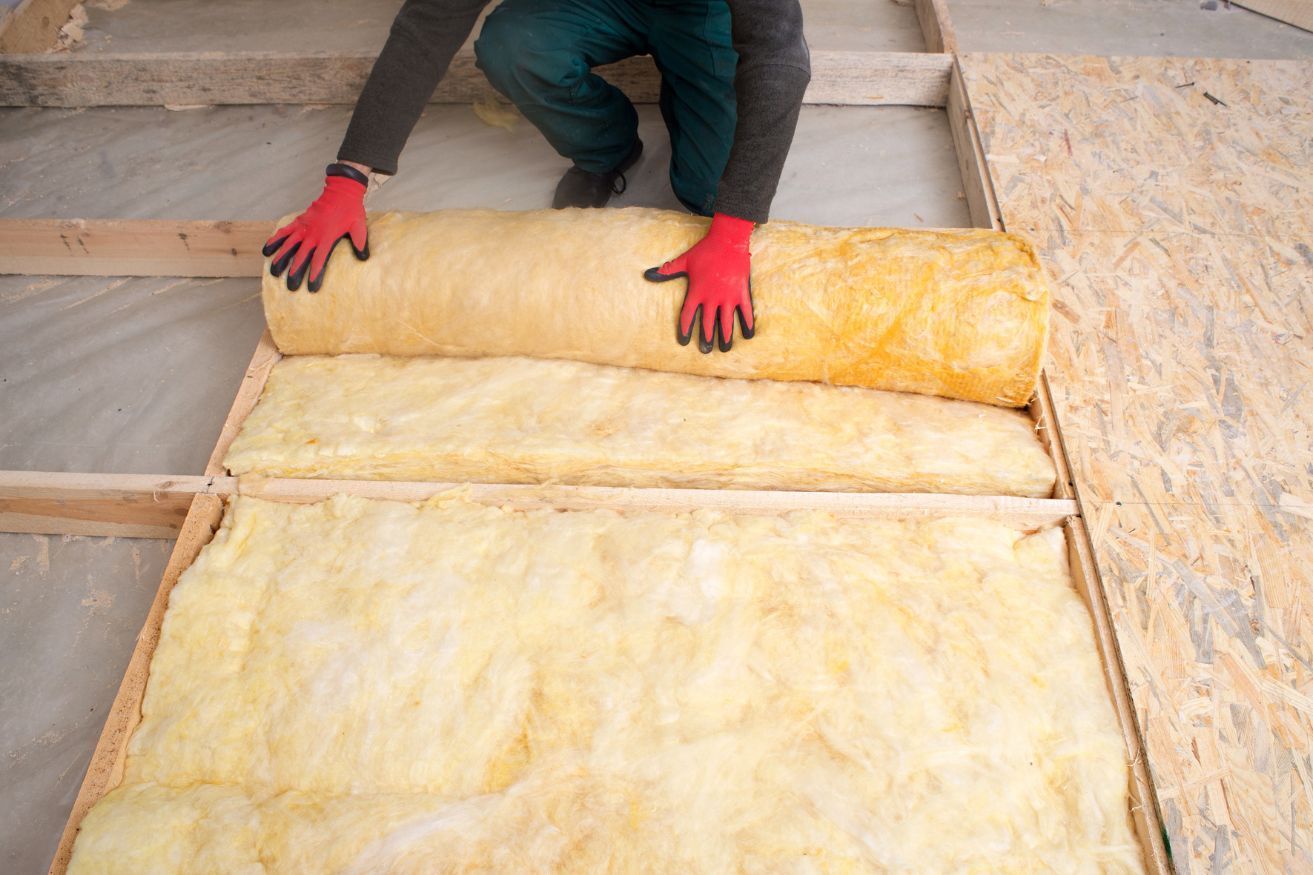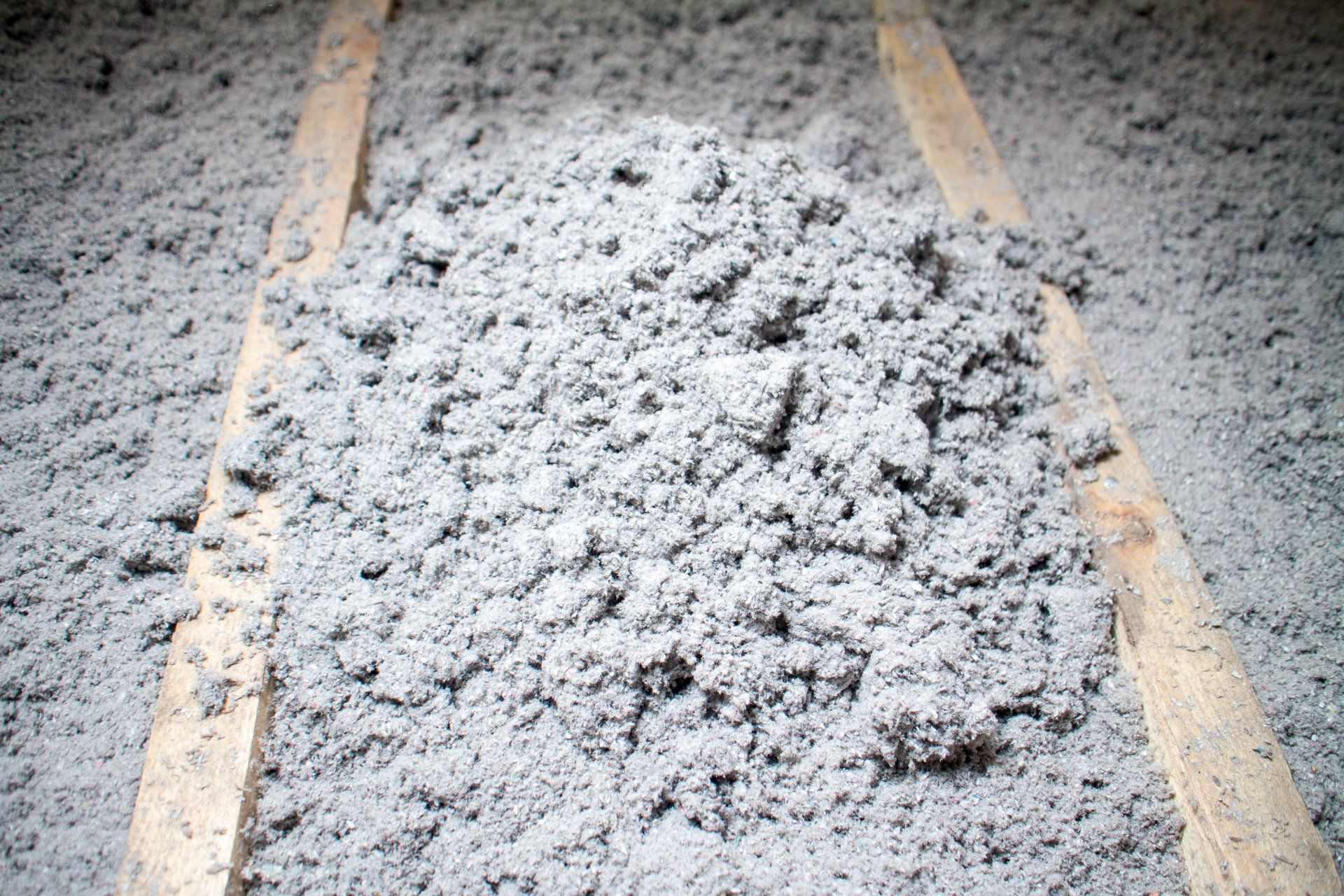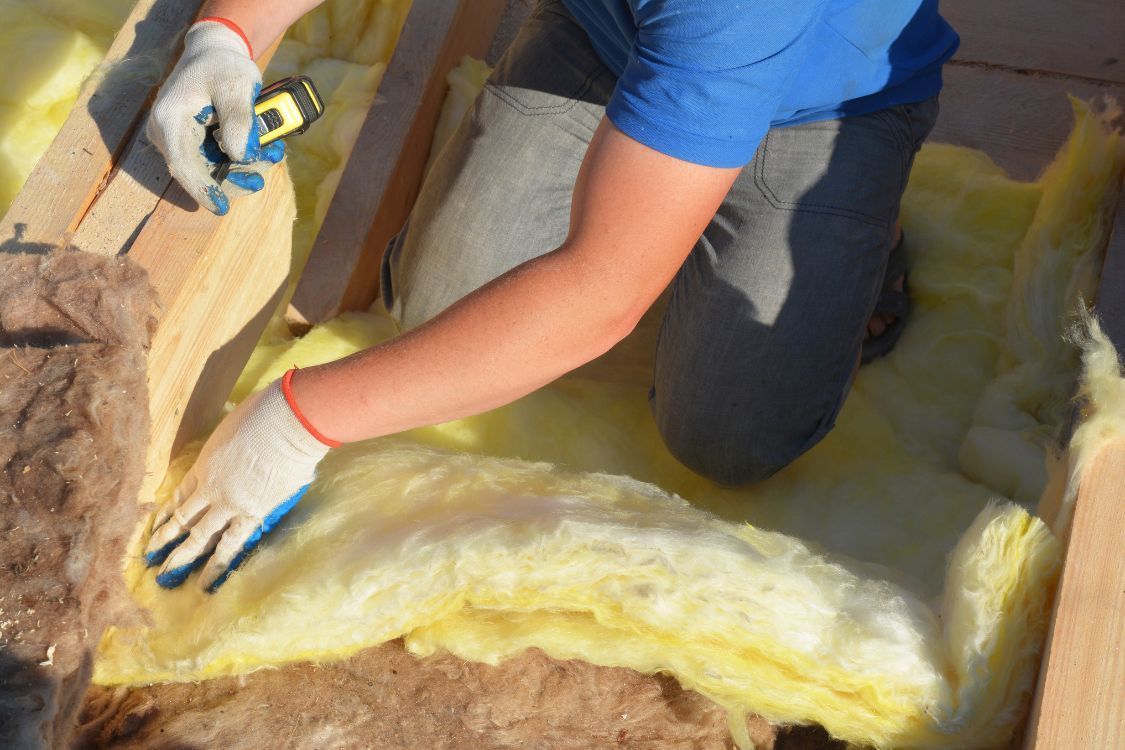Mold in Attic: Signs, Risks & Removal Guide
What does mold in an attic look like?
Mold in an attic is a common yet often overlooked issue. It can cause significant damage to your home.
Recognizing mold early is crucial for preventing costly repairs. Mold often appears as black, green, or white spots.
These spots can be found on wood surfaces or insulation. A musty odor is another telltale sign of mold presence.
Mold thrives in damp, poorly ventilated spaces. Attics, with their unique conditions, are prime locations for mold growth.
Ignoring mold can lead to structural damage and health risks. Respiratory issues and allergies are common health concerns.
Understanding the signs of mold in attics is essential. It helps in taking timely action to mitigate risks.
This article will guide you through identifying attic mold. We will also explore removal and prevention strategies.
By the end, you'll be equipped to protect your home and health from mold.
Understanding Mold in Attics: Why It Matters
Mold is more than just an unsightly blemish. It poses real threats to both property and health. Understanding why mold matters is key to protecting your attic.
Firstly, mold can structurally weaken your home. It feeds on materials like wood, leading to decay over time. This can affect the integrity of your attic and entire roof structure.
Secondly, mold is linked to several health issues. Allergies, asthma, and other respiratory problems are common concerns. Mold releases spores into the air, which can be inhaled by occupants.
Moreover, mold in attics is often hidden from sight. Attics are usually out of the daily routine, so mold can grow undetected. Regular inspections are essential to catch mold early.
Lastly, mold can diminish your home's resale value. Visible mold can deter potential buyers, and undisclosed mold can lead to disputes. Addressing mold issues promptly avoids future complications.
In summary, understanding mold involves recognizing its impacts on:
- Structural integrity
- Health of occupants
- Property value
Taking proactive measures can safeguard your home against mold. Prevention and early detection are your best defenses.
What Does Mold in an Attic Look Like?
Spotting mold in your attic can be tricky. It often masquerades as stains or discoloration. Mold can be sneaky, showing up in various shades.
Mold may appear as black, green, or white spots. These colors depend on the type and the surface. Some mold types even exhibit fuzzy or slimy textures.
A distinctive feature of mold is its pattern. Mold growth typically appears in clusters or patches. These patterns are random but can grow rapidly.
Musty odors are a telltale sign of mold presence. If your attic smells earthy or damp, suspect mold. Mold often hides behind walls or insulation.
Mold can also be mistaken for soot or dirt. Examine closely to distinguish mold from other materials. Using a flashlight can reveal more detail.
- Characteristics to note:
- Color: black, green, white
- Texture: fuzzy or slimy
- Pattern: clusters or patches
Finding mold early is crucial. It prevents further growth and more significant damage. Inspections should be done routinely.
Humidity is a key contributor to mold growth. Proper insulation and ventilation can deter moisture buildup. Be proactive in managing attic conditions.
Common Types and Colors of Attic Mold
Identifying mold types is important in treatment. Different molds have distinct colors and characteristics. Spotting these can guide effective removal methods.
Black mold, or Stachybotrys, is notorious. It is often slimy and thrives in wet environments. Chronic exposure can exacerbate health issues.
Green mold, such as Aspergillus, is another common type. It can produce allergens and mycotoxins. This mold prefers damp, nutrient-rich areas.
White mold, or Cladosporium, often looks powdery. It tends to grow on wood and insulation. Although less toxic, it still poses health risks.
Knowing these colors helps in early detection. Each mold type may require different removal techniques. Assessment by professionals is beneficial.
- Mold types to watch for:
- Stachybotrys: black, slimy
- Aspergillus: green, allergenic
- Cladosporium: white, powdery
Detection and identification lead to better management. Understanding what you're up against is key. This helps choose appropriate removal actions.
Where Mold Grows: Typical Locations in the Attic
Mold often chooses certain spots in attics. These locations tend to be moist and poorly ventilated. Knowing where to look streamlines inspections.
Roof leaks frequently lead to mold growth. Water from leaks collects on ceilings and beams. These areas become prime mold habitats.
Insulation is another common mold site. Damp insulation traps moisture, fostering mold spread. It reduces insulation efficiency, increasing energy costs.
Corners and edges of attics are often overlooked. These spots may have poor airflow, which mold loves. Check these areas during inspections.
- Common mold locations in attics:
- Near roof leaks
- Within insulation
- Corners and edges
Regular checks prevent mold from going unnoticed. Maintaining proper ventilation can help as well. Routine maintenance is critical in mold management.
Signs of Mold in Attic Spaces
Detecting mold in an attic starts with knowing what to look for. Mold may not always be visible, but there are other clues you can observe. A keen eye is essential to spot these signs early.
A musty smell is often the first indicator of mold. This odor suggests moisture and possible hidden mold. If your attic consistently smells damp, it's time to investigate further.
Look for discoloration on walls and ceilings. Stains or streaks may indicate mold growth. These blemishes can range in color from dark to light shades.
Condensation on surfaces can also signal mold. Excess moisture fosters mold development. Regular moisture checks can catch mold before it becomes problematic.
Warped or rotting wood is another sign. Mold breaks down wood fibers, altering their structure. Weakened beams pose structural threats and should be addressed swiftly.
- Consider these telltale signs:
- Musty odors
- Discoloration
- Condensation
Health symptoms can point to mold presence too. Family members might experience allergic reactions. Symptoms include sneezing, coughing, and skin irritation.
Past water damage often leads to mold. If leaks are not repaired, mold growth can follow. Always check for mold after addressing any water leaks.
- Health and history indicators:
- Allergic reactions
- Past water damage
- Structural wear
Regular attic evaluations help in early detection. Mold can cause significant damage if left unchecked. Make mold inspections a routine to ensure a safe home.
Causes of Mold Growth in Attics
Mold thrives in environments where moisture prevails. Attics, often closed off and humid, become ideal breeding grounds. This section uncovers the reasons behind mold's ascent in attics.
One primary cause is inadequate ventilation. Without proper airflow, humidity builds up, fostering mold growth. Ensuring good ventilation can greatly reduce this risk.
Roof leaks are another common culprit. Water seeping in from above provides mold with its most vital ingredient: moisture. Regular roof maintenance is crucial to avoid this issue.
Poor insulation leads to temperature imbalances. When insulation is not adequate, condensation forms, leading to moisture accumulation. Mold loves this kind of environment.
Diverse climate conditions also influence mold activity. In areas with heavy rainfall or humidity, attics are more vulnerable. Awareness of climate impacts can aid in prevention.
- Key mold catalysts:
- Inadequate ventilation
- Roof leaks
- Poor insulation
Attic design can compound mold risks. Many attics have hard-to-access corners where mold hides. Regular attic checks should account for such hidden spots.
- Additional considerations:
- Climate influences
- Attic design
Lastly, appliances in attics may add to the problem. Appliances like water heaters can leak, increasing humidity. Always inspect attic-based machinery for leaks.
Understanding these causes of mold growth helps in creating preventive strategies. Each factor should be addressed to keep attics mold-free and safe.
The Role of Insulation and Ventilation
Insulation and ventilation play vital roles in moisture management. Attic insulation helps regulate temperature, reducing condensation. Proper insulation coverage is critical for mold control.
Ventilation complements insulation by controlling humidity levels. It allows moisture-laden air to escape, reducing mold risks. Be mindful of blocking vents with insulation materials.
- Important points:
- Temperature regulation
- Humidity control
- Vent clearance
A balanced interplay between these systems is essential. Together, they maintain a dry and mold-free attic environment. Regular checks ensure both systems function effectively.
Should you notice any anomalies, address them quickly. Doing so prevents mold-friendly conditions from developing. This proactive approach is key to long-term mold prevention.
Regional Focus: Spokane and Coeur d'Alene Attic Mold
The climate in Spokane and Coeur d'Alene is mold-conducive. With distinct seasons, these areas can challenge attic mold prevention. Understanding local conditions is crucial for mitigating risks.
Heavy snowfall and cold winters in these regions contribute to mold development. Snow on roofs may lead to water infiltration if not properly managed. Awareness of such local conditions is vital.
- Regional risks include:
- Snowfall impacts
- Varied humidity
Residents should pay attention to these environmental factors. Keeping attics dry during wet or snowy seasons helps. Simple steps, like snow removal from rooftops, can make a big difference.
Implementing region-specific strategies can aid in reducing mold risks. Consider consulting local experts familiar with these areas. Such insights can guide effective mold prevention practices.
Mold in Attic Insulation: What to Watch For
Mold in attic insulation can be stealthy yet damaging. It often goes unnoticed until it causes significant problems. Knowing what to look for can save time and money in addressing the issue.
Insulation materials are prime targets for mold. They're absorbent, holding onto moisture and creating ideal mold habitats. Discoloration on insulation can indicate mold presence.
Besides color changes, look for a musty smell. This odor often signals mold growing within insulation fibers. A persistent earthy aroma warrants further inspection.
Mold can also impact insulation's effectiveness. Compromised insulation doesn't regulate temperature well, leading to uneven heating or cooling costs. Rising energy bills may hint at insulation issues.
Physical inspection is essential to identify mold in insulation. Regular attic assessments can catch mold early. Identifying and addressing these indicators can preserve insulation integrity.
- Key signs of mold in insulation:
- Discoloration
- Musty odor
- Uneven energy costs
Prompt action against these signs is crucial. Removing and replacing affected insulation stops mold from spreading. This proactive approach safeguards home health and efficiency.
Mold Health Risks: Why Prompt Action Matters
Mold in an attic isn't just a structural issue; it's a health concern too. Mold spores in the air can impact well-being. Promptly addressing mold can prevent these risks from escalating.
Exposure to mold may trigger respiratory issues. People with asthma or allergies are especially vulnerable. Even short exposures can lead to breathing difficulties or allergic reactions.
Prolonged mold exposure may lead to more serious conditions. These include chronic sinus infections, headaches, and fatigue. Sensitive individuals might experience heightened symptoms with ongoing exposure.
Mold poses risks beyond respiratory problems. It can affect the immune system, making the body more susceptible to infections. As mold spores spread, they may lead to diverse health impacts.
Understanding these risks underscores the need for action. Mold removal protects not just the home, but also its occupants. Reducing exposure lessens the chance of health complications.
- Key health risks of mold exposure:
- Respiratory issues
- Allergic reactions
- Compromised immunity
Taking steps to control mold supports health and comfort. Early remediation mitigates both immediate and long-term health dangers. Addressing mold promptly ensures a safer living environment.
Attic Mold Removal: DIY vs. Professional Solutions
When confronting attic mold, deciding between DIY methods and hiring professionals is critical. Each approach has pros and cons.
DIY mold removal can be cost-effective. For minor mold problems, homeowners might handle cleaning themselves. It's crucial to use the right protective gear to avoid health risks.
However, DIY efforts can be risky. Mold spores can easily become airborne, spreading throughout the home. Without proper containment, you might inadvertently exacerbate the issue.
Professional mold remediation offers thorough and safe removal. Experts have the tools to address even the most entrenched mold. They assess mold extent, ensuring all affected areas are treated.
Professionals also provide the benefit of expertise. They identify moisture sources contributing to mold growth. By addressing these issues, future mold recurrence can be minimized.
While professional services can be more costly, the investment often ensures a comprehensive solution. Experts can also advise on preventive measures post-removal.
Weighing your mold removal options involves assessing the severity of the mold infestation. Mild issues might be manageable on your own. However, extensive or persistent mold warrants professional attention.
- Pros of DIY:
- Cost-effective for minor issues
- Immediate action possible
- Pros of Professional Solutions:
- Expertise and thoroughness
- Long-term prevention strategies
Choosing the right approach will depend on individual circumstances. Consider both the extent of the mold and your comfort with handling potential health hazards. The primary goal is to ensure a mold-free and safe living environment.
Moldy Attic Insulation Removal: Step-by-Step
Removing moldy insulation is essential for addressing attic mold. Follow these steps carefully to ensure effective removal.
First, wear protective gear. This includes gloves, goggles, and a mask to safeguard against mold spores. Ensuring personal safety is a top priority during the removal process.
Next, inspect the insulation. Identify all areas with visible mold. Be thorough; mold can hide in less obvious spots.
Then, carefully remove the affected insulation. Use sealed bags to dispose of materials securely. This prevents spores from spreading to other areas of the home.
After removal, clean the space with an appropriate mold cleaner. This will kill any remaining spores and prevent regrowth. Once cleaned, consider replacing the insulation with mold-resistant materials.
- Steps for safe removal:
- Wear protective gear
- Identify and assess moldy areas
- Securely dispose of materials
- Clean the space thoroughly
Following these steps ensures proper management of moldy insulation. Addressing the underlying moisture issue will help prevent future problems, protecting both your home and health.
Preventing Mold in Your Attic: Best Practices
Preventing attic mold requires proactive measures. Simple steps can deter mold growth and protect your home.
First, ensure proper ventilation. Adequate airflow is crucial in regulating attic humidity levels. Install vents or fans if necessary.
Control moisture by fixing leaks promptly. Check for roof or pipe leaks regularly. Addressing these can significantly reduce mold risk.
Maintain insulation in good condition. Insulation helps regulate attic temperature and moisture. Use mold-resistant insulation for added protection.
Conduct regular attic inspections. Early mold detection makes remediation more manageable and less costly. Look for signs such as discoloration or musty odors.
Consider moisture barriers. Installing these in the attic can help keep humidity in check, deterring potential mold growth.
- Ventilation tips:
- Install vents for airflow
- Use fans as needed
- Additional prevention strategies:
- Use mold-resistant insulation
- Employ moisture barriers
Integrating these practices into your home maintenance routine can effectively prevent mold in attics. Staying vigilant and addressing potential issues promptly is key to maintaining a healthy home environment. By following these best practices, you safeguard both your property and your family's well-being.
Frequently Asked Questions About Attic Mold
What are common signs of mold in attic spaces?
Mold often manifests as discolored patches and musty odors. It can vary in color from black to green.
Can I clean attic mold myself?
DIY removal is possible for small areas. However, extensive mold requires professional remediation for safety and effectiveness.
How does mold affect home insulation?
Mold in insulation can decrease its efficiency and lead to higher energy costs. Moldy insulation should be removed and replaced.
- Key FAQs:
- Signs of mold?: Odors and discoloration.
- DIY or Professional?: Small DIY possible; large infestations need experts.
- Impact on insulation?: Reduces effectiveness, increases costs.
Understanding these common questions can empower homeowners to manage attic mold more effectively. Adequate knowledge ensures prompt, appropriate actions for a healthy home environment.
Conclusion: Protecting Your Home and Health
Mold in attics is not just an unsightly issue. It poses significant health risks and can affect the structural integrity of your home. Recognizing the signs of mold early allows for prompt action.
Effective insulation and ventilation are crucial in preventing future mold growth. They maintain a dry environment, reducing the likelihood of mold development. Regular inspections should be a part of your maintenance routine.
Addressing mold issues promptly with professional help ensures effective remediation. It safeguards your health and preserves your property’s value. By staying informed and vigilant, you can protect your home and create a safe, healthy living space for you and your family.


